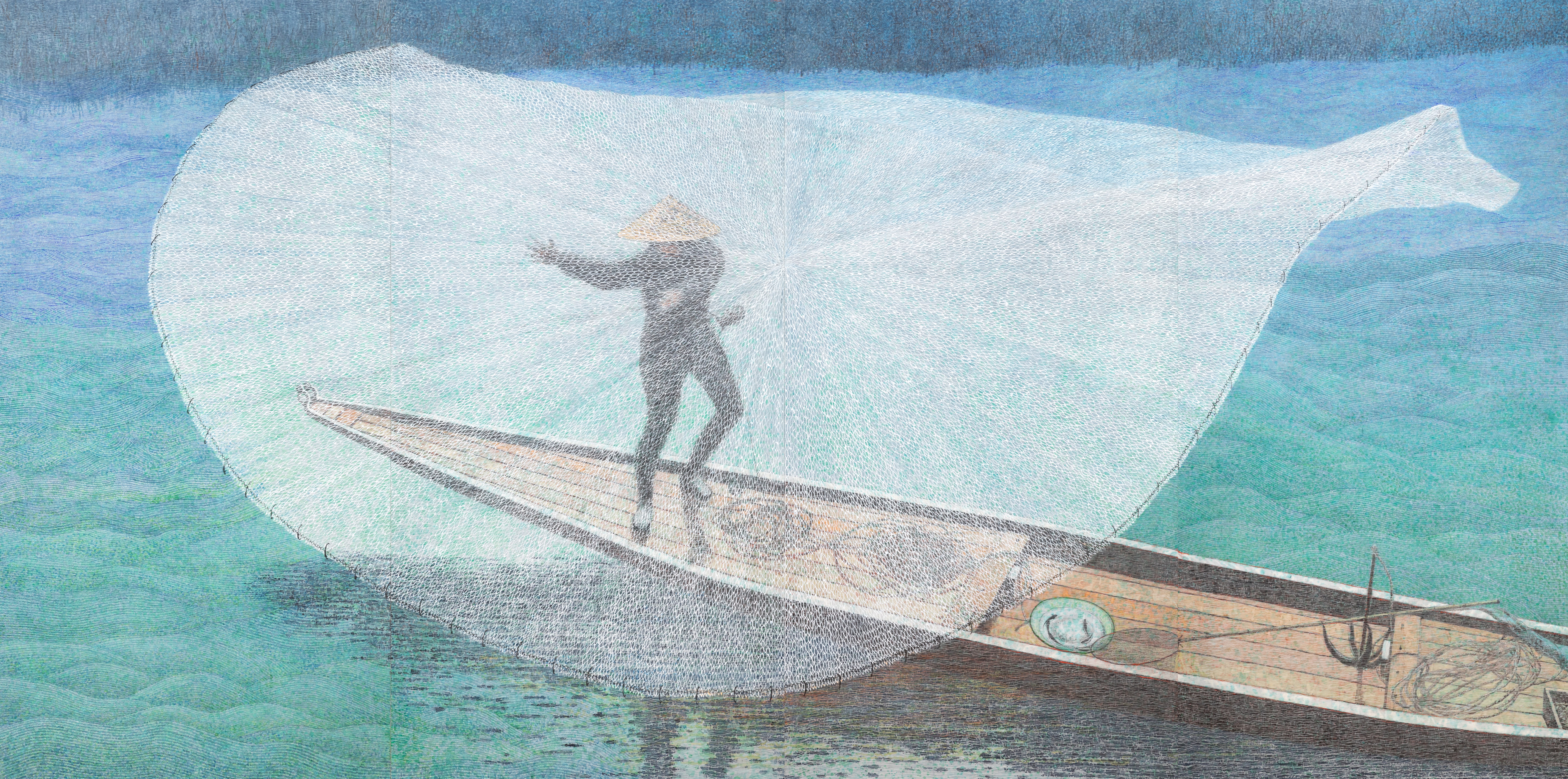VOYAGE BLUE
Ippodo Gallery debuts at Independent 20th Century alongside Japan’s leading living painter Masaaki Miyasako and 9 fellow contemporary Japanese artists of diverse mediums all working to innovate traditional techniques. Set in the Riverside Special Exhibition Room overlooking Manhattan’s Upper Bay, VOYAGE BLUE is an invitation to embark on an odyssey in Japanese culture. Acclaimed across Japan and Europe for his revival of the ancient reverse-side painting style urazaishiki from the 9th century, Miyasako’s six-foot-long nihonga screen “Firework ‘Aqua’” is a vision of the fisherman’s cast net: a timeless symbol of opportunity and good fortune. As the Professor Emeritus of Japanese Painting at Tokyo University of the Arts, Miysako has cultivated an unparalleled ‘point’ based technique using the best materials available in Japan today. Exclusively nestled in the south hall, the elegantly blue-accented Cipriani South room is an undisturbed moment to encounter rare works of Japanese fine art.

Installed in tandem with tea bowls, ceramic sculptures, and glass from a breadth of different regions of Japan, the tactile sensibility of raw bizen clay, hand-painted and lacquer-infused porcelain, and hand-coiled mud vessels—among others—juxtapose the three-layers of Miyasako’s painted ten-year-aged paper. Miyasako begins drawing each scene from his mind’s eye in valuable sumi charcoal, before moving into paint itself. His powdered pigments, made himself from Azurite, Malachite, and other precious earth, and even organisms such as coral, are applied onto the layered paper using specialty-made brushes of white animal hairs embedded in a spiral formation; these tools will join the exhibition. Lauded as the only modern painter capable of preserving the venerable urazaishiki, Miyasako’s fastidious pointillism-like approach begins in the center of the painting and emanates outwards as he works in an expanding spiral. Layering colors by placing three individual sheets of washi paper atop one another, Miyasako creates light and shadow, depth, and vivid hues. Derived from ancient and enduring methods, Miyasako’s paintings will only become more vibrant with the passage of time as the paper threads gradually become more translucent as only washi does.
VOYAGE BLUE introduces fairgoers to new design perspectives while remaining deeply rooted in the traditions of earth-wrought materials paramount to Japanese sensibilities. Kota Arinaga (b. 1978)weaves together the history of the silk road with glass, capturing new effects based on classic Venetian styles. Though the kiln must burn continuously for 14 days, Hiroshi Goseki (b. 1988) is a close attendant to the fire’s fluctuations to realize the rare blue yohen kiln effect. Tomoyuki Hoshino (b. 1976)transforms his iconic chromatic motif into a vision of sea foam. Japan’s north coast is home to Yukiya Izumita (b. 1966), whose gravity defying ceramics reflect the wind buffeted rock bluffs and seismic shifts that create tsunami. Monolithic, enigmatic, and relic-like, the hand-coiled stoneware vessels by Mitsukuni Misaki (b. 1951)are an ode to Mark Rothko’s signature color blocking, and their rope-rolled surfaces harken back to relics from ancient Japan. Yoca Muta (b. 1981) tells tales of creatures, real and mythological, as painted scenes on porcelain in the vein of the Kutani tradition in vivid color and detail. Like rolling ocean waves of green and blue, Midori Tsukada (b. 1972) etches fine details in glass that accentuate translucency and a dichotomic appearance between liquid and solid. Inspired by skin and bodies, Kodai Ujiie (b. 1990) seals the porcelain surface in an avant-garde interpretation of the tradition of kintsugi; rather than mending a break, the lacquer serves to further mutate the bulging appendages like colorful arteries and veins.







